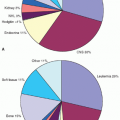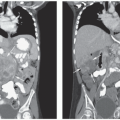The distinction between “therapeutic” and “nontherapeutic” research is widely invoked. It featured prominently in the first five
versions of the World Medical Association’s (WMA’s)
Declaration of Helsinki, which posited “a fundamental distinction…between medical research in which the aim is essentially diagnostic or therapeutic for a patient, and medical research, the essential object of which is purely scientific…”
28 Ethicists, however, have challenged the idea of “research in which the aim is…diagnostic or therapeutic for a patient” as incoherent.
29 The WMA abandoned the distinction in the Declaration’s fifth (2000) revision.
The Belmont Report offers an alternative conceptual framework.
26 Though best known for its principles of respect for persons, beneficence, and justice, the Report’s articulation of the boundary between practice (treatment) and research is equally important. The Report defines
practice as “interventions…designed solely to enhance the well-being of an individual patient or client and that have a reasonable expectation of success.” In contrast,
research is “an activity designed to test a hypothesis, permit conclusions to be drawn, and thereby to develop or contribute to generalizable knowledge.” The Report thus views research and treatment as conceptually distinct endeavors, albeit ones that may intersect in a trial.
New paradigms in clinical research, including comparative effectiveness research and the learning health care system, prompt conceptual questions for research ethics. There is growing recognition of gaps in evidence regarding optimal treatment, wide variations in patterns of care, quality deficits, and the need for cost-effective use of health care resources. At the same time, health systems and payers routinely capture clinical and administrative data that are invaluable for understanding and improving care. As a result, multiple stakeholders emphasize the need to integrate learning activities, ranging from what has traditionally been called quality improvement to observational and interventional research, into every aspect of care.
30,31,32,33 At this level of integration, the boundary between research and treatment inevitably blurs.
The Role of the Clinical Researcher
When a patient enrolls in a trial, the physician-patient relationship changes.
34,35 The physician is now also an investigator, and the patient also a study participant. The investigator takes on obligations to science—fidelity to the protocol and its objectives—distinct from her or his fiduciary duties to the patient. This dual obligation requires a unique professionalism. Some have even argued that enrolling in a study—particularly one that involves random assignment—amounts to a renunciation of “personal care,” and is therefore ethically problematic.
36,37 This criticism is too strong; pediatric oncology has largely succeeded in aligning the investigator-participant and physician-patient relationships. Nevertheless, the unavoidable tension between these relationships requires recognition,
34 and study designs that deviate from a strict conception of the participant’s best interests (e.g., involving extra research-specific bone marrows or lumbar punctures) require rigorous justification. Miller and Rosenstein
38 decry the prevalent “therapeutic orientation to clinical trials,” which confounds the roles of clinician and investigator. Joffe and Miller
39 call for reconceptualizing the clinical investigator as someone engaged in scientific experimentation, albeit within constraints imposed by the rights and interests of the study participant, rather than as a clinician who also engages in research.
The Therapeutic Misconception and Informed Consent to Research
If research is conceptually distinct from care, then the implications of study enrollment should be clearly disclosed to prospective participants. These include the constraints on individualized care necessitated by the study’s scientific goals and methods and the fact of participation in an endeavor whose primary purpose is to advance knowledge or treatment. Failure to understand this has been termed the “therapeutic misconception,”
40 defined by the National Bioethics Advisory Commission (NBAC) as “the belief that the purpose of a clinical trial is to benefit the individual patient rather than to gather data for the purpose of contributing to scientific knowledge.”
41 (Importantly, NBAC also emphasized that “[i]t is not a misconception to believe that participants probably will receive good clinical care during research.”) Though the evidence is imperfect, accumulating data suggest that therapeutic misconceptions are prevalent and inhibit participants’ ability to recognize salient distinctions between research and ordinary care.
42,43,44 If so, then those who seek informed consent for research must endeavor to counter participants’ tendencies toward therapeutic misconceptions. The American Medical Association (AMA) recommends that, to minimize therapeutic misconceptions as well as perceptions of pressure to enroll, treating physicians should not seek their own patients’ consent to participate in a trial in which they serve as a coinvestigator.
45Kodish et al.
43 offer important guidance for investigators who discuss clinical trials with patients and parents. Their model emphasizes the need for a strategic, sequenced approach that focuses first on understanding of a child’s diagnosis and prognosis, followed by discussion of current treatment. Only then should the investigator raise the option of trial participation.
46 More generally, available evidence suggests that extended contact with a knowledgeable member of the study team is the most effective means of enhancing participant understanding.
47
Special Requirements for Research with Children
In addition to the Belmont Report, the National Commission for the Protection of Human Subjects of Biomedical and Behavioral Research published a separate report on pediatric research.
49 The Commission developed the concept of assent (i.e., affirmative agreement). U.S. federal regulations require affirmative agreement from pediatric participants unless either (1) they are incapable of providing meaningful agreement due to age, maturity, or psychological state; or (2) the research offers the prospect of direct benefit that is unavailable outside the research.
50 In addition, some children who are developmentally incapable of providing affirmative agreement may still express “deliberate objection.” According to the Commission, such dissent should be respected unless there are compelling reasons to the contrary.
Despite the mandate to obtain the child’s assent, the notion remains challenging. First, it views the child’s decision as radically separate from the parents,’ and therefore ignores the interconnected nature of decision making within families.
51 Second, it allows the child to veto the parents’ decision, which some have criticized as failing to respect parents’ appropriate roles. Third, the dichotomous nature of the decision to require or not require assent ignores the nonlinearity of children’s cognitive and moral development,
53 and fails to recognize the practical complexities of engaging acutely ill children in these conversations.
54 Fourth, there are no agreed-upon standards for what constitutes “meaningful” assent. And finally, while several studies suggest that, under optimal circumstances, children aged 14 years or older can achieve levels of comprehension approaching those of adults, the extent to which younger children can engage in these deliberations is controversial.
51,55,56,57 The Children’s Oncology Group (COG) has offered guidance in an effort to fill in these gaps (
Table 47.2).
58Although competent individuals can altruistically agree to take part in high-risk research studies without the prospect for compensating benefit, surrogate permission cannot justify enrolling incompetent individuals, including children, in such studies.
59 To deal with questions of maximum permissible risk for children, the National Commission defined four categories of pediatric
research. These combine judgments about risk (i.e., minimal risk, minor increment over minimal risk, or more than a minor increment above minimal risk) with determinations about whether the research holds the prospect of direct benefit (
Table 47.3). U.S. regulations governing pediatric research incorporate this framework.
50 The regulations define minimal-risk research as research in which “the probability and magnitude of harm or discomfort…are not greater in and of themselves than those ordinarily encountered in daily life or during the performance of routine physical or psychological examinations or tests,” but do not specify what constitutes a minor increment over minimal risk.
60Although this framework serves reasonably well, three important problems bear mention. First, the validity and consistency of judgments about the level of risk associated with a particular procedure are questionable.
61,62 Second, the standard therapies that patients receive outside trials often entail substantial risk. Many trials include such standard therapies in their treatment backbones, either in the context of testing a novel regimen against a widely
accepted control or—in the setting of comparative effectiveness research—evaluating accepted regimens against each other to determine which is best. From an ethical standpoint, these standard-care risks, to which patients will be exposed whether or not they enter the trial, should not be considered risks of research. Rather, risk evaluation should focus on the incremental risks that patients incur by virtue of their joining the trial.
63,64 Finally, the framework presupposes that each study fits uniquely into one of the four categories. However, many protocols involve multiple elements. A trial might both administer an investigational agent that offers the prospect of direct benefit and require serial bone marrow aspirates performed for research purposes. Judging such a protocol as a whole, rather than in terms of its parts, succumbs to the “fallacy of the package deal.”
65 Each component should be evaluated individually,
51 and investigators should avoid using the benefits of one element (e.g., access to an investigational agent) to justify the burdens of another (e.g., protocol bone marrows).
In 2004, the U.S. Institute of Medicine (IOM) comprehensively reviewed the ethical and regulatory issues related to children’s participation in research.
51 The IOM’s report included recommendations addressing definitions of risk thresholds and the relationship of risk to the condition and age of the patient; the need for institutional review board (IRB) review to consider the details of parental permission and assent, with emphasis on process rather than on forms; the need for parental education regarding the research process to facilitate parents’ role as their children’s trustees; and the training of investigators.









